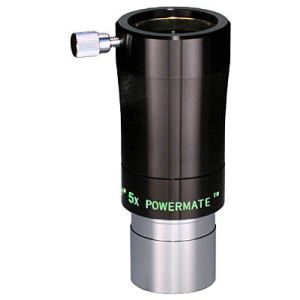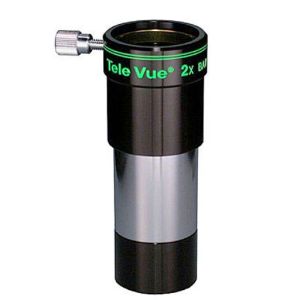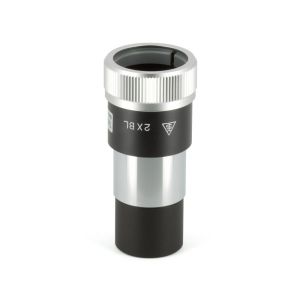
TAKAHASHI
Intermediate instrument between the TSA-102, of which it takes again the main features, and the TOA-130, TSA-120 refractor replaces the famous FS-128. The TSA-120 is characterized by its simplicity, its versatility and his exceptional quality/price ratio.
Available within 5-14 days

This includes products that we do not keep in stock but are only available on request or have been announced by the manufacturer. For orders of these items, a deposit is required, proportional to the total value of your order. As soon as we receive your order, we will notify you by e-mail or telephone, for the exact delivery time and the amount of the deposit.
TAKAHASHI TSA-120
Intermediate instrument between the TSA-102, of which it takes again the main features, and the TOA-130, TSA-120 refractor replaces the famous FS-128. The TSA-120 is characterized by its simplicity, its versatility and his exceptional quality/price ratio.
TSA-120 features the specifications of the TSA-102S : an apochromatic objective with triplet ED, a retractable dew-shield, great mechanics and versatility of use, both visual and photographic. Moreover, TSA-120 is extremely light, it weights only 6.7 kg. Even when TSA-120 is fully equipped for CCD imaging, EM-200 will easily holds it. No extra heavy mounts will be required.
This refractor can be equipped with the same optical accessories as the TSA-102, including the focal reducer TOA-RD #18, the field corrector TOA-FL35 and ED 1.5x and TOA 1.6x extenders. The specific system-charts will help you to specify the necessary configurations.
Features
Optics

The TSA-120 is equipped with an apochromatic objective with triplet ED lenses of 120mm of diameter (F=900mm, F/7.7), set in a simple barrel. This barrel ensures a good stability of the opto-mechanics chain against the usual constraints of transport and against the important variations of temperature of use. The TSA-120 is proposed with a retractable dew shield.

Mechanics
The short tube of the TSA-120 facilitates its transport. It allows also the use of many kind of accessory assemblies, especially for those using important length (230mm of backfocus, see the Specifications section). The assemblies of screwed accessories, recommanded by Takahashi, are still possible (see System-charts section). However, the standard 50.8mm adapter universalizes the TSA-120 without option, even if the use of the optional camera angle adjuster (CAA) is highly recommended.
Accessories
The reading of the system-charts gives a good idea of the sphere of activities of the TSA-120. The addition of the optional field corrector allows imaging at prime focus with the F/7.5 default focal ratio. The TOA-RD reducer (F/5.6) gives to it more ease in wide field astrophotography. All the assemblies fulfill the requirements of rigidity and flexibility needed by the new imaging devices, such as the SLR/DSLR or CCD cameras.
Optical design and chromatic correction
Takahashi has developed an air-spaced ED triplet objective (3 lenses in 3 groups). This triplet consists of a lens of ED glass (S-FPL53) laid out between 2 crown lenses air-spaced by a mean chock. Alike the TOA objective, optics have been designed and calculated according to the high requirements of the current numerical imaging.
Spots diagrams of TSA-120
The spot-diagrams give a good idea of the results obtained on the image circle, whether it is at prime focus or behind optical accessories. The 35-FL field corrector shows all its effectiveness in wide field imaging with DSLR cameras, for example.
TSA-120 - Spot diagram analysis
A spot-diagram represents a theoretical image at prime focus of a limited number of supposed monochromatic beams of light sent through the objective of the instrument (generally sent on concentric circles).
The squares represented on each figure correspond to a square of 100 microns, which gives an idea of the size of a pixel of CCD camera equipped with sensors like KAF-11002 (SBIG STL-11000 or Apogee Ascent A11000) or KAF-6303 (SBIG STL-6303, Apogee Ascent A2) or KAF-1603 (Apogee Ascent A9).
1. Axial spot diagram at prime focus

The figures below show different spot diagrams at prime focus of the TSA-120, according to the wavelength of the incidental rays.
Even without corrector, the diffraction pattern behaves in a remarkable way, still entering the theoretical pixel at a distance from 15mm of the axis (for a 30mm diagonal sensor). However we note the presence of a coma residue at the edge, residue which will appear since the sensor will be of bigger size.
2. Spot diagrams with 35FL flattener
These spot-diagrams are now obtained on refractors equipped with the 35FL flattener. The parameters are identical to the figures above, obtained at prime focus.

We clearly note the advantage of the flattener, in both cases. The coma residue has completely disappeared in the image edge. Its role is even more important for the TSA-102, where no over-correction is to be seen.
3. Spot diagrams with TOA35-RD focal reducer
For a deep sky using, the focal reducer makes it possible to clearly reduce the focal ratio, to decrease the exposure time and to gain in apparent field. For the spot-diagrams below, the two refractors are equipped with the reducer, with the same initial parameters as the spot-diagrams obtained at prime focus.

The addition of the reducer does not involve any degradation of the spots on the image circle. This remains extremely well corrected and makes it possible to exploit as well as possible the most demanding sensors owned by the last CCD and DSLR cameras.
| Net Weight (g) | 6700 |
|---|---|
| Optical design | Apochromatic Refractor |
| Aperture (mm) | 120 |
| Focal length - F (mm) | 900 |
| Focal ratio (f/) | 7.5 |
| Finderscope | 7x50 |
Delivered with :
[TTK12010] - Takahashi TSA-120 (OTA) tube only, with 50.8mm and 31.75mm adapters
[TKA00552] - 7x50 finder
[TKA00563] - Finder bracket
[TKA36420] - Tube holder


